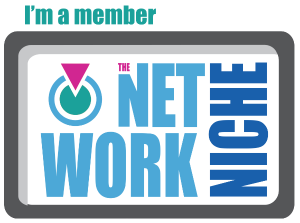 Spring Break is our favorite family time for road trips. That’s when we pick a destination, pack our bags, lock our home and literally hit the road. Yet before we even put foot to the pedal, there’s a thorough process of planning, reflection and elimination that takes place. An offer is made, and we all participate in defining whether what we can do together and for each other as a family is compelling enough for all of us. I love visiting museums, while the hubby enjoys long drives, and the kids will do pretty much anything that involves high-energy activities and some level of sugar intake. In a way, our Spring Break prep process is a lot like writing a business proposal. We make one or many offers outlining what we can do for each other, why we’re the best at doing it, and sell our arguments around in hopes of winning the best deal for everyone.
Spring Break is our favorite family time for road trips. That’s when we pick a destination, pack our bags, lock our home and literally hit the road. Yet before we even put foot to the pedal, there’s a thorough process of planning, reflection and elimination that takes place. An offer is made, and we all participate in defining whether what we can do together and for each other as a family is compelling enough for all of us. I love visiting museums, while the hubby enjoys long drives, and the kids will do pretty much anything that involves high-energy activities and some level of sugar intake. In a way, our Spring Break prep process is a lot like writing a business proposal. We make one or many offers outlining what we can do for each other, why we’re the best at doing it, and sell our arguments around in hopes of winning the best deal for everyone.

In the same way, writing a killer business proposal is about presenting an offer to your prospects demonstrating what you can do for them in and why you are the best person/company to do it. If you’re a business person or an entrepreneur, you may know how important business proposals are. They cement business deals and set the stage for profitability in your venture. However, they must also be persuasive, compelling and clear enough to elicit a vibrant “yes”.
Here are 5 tips to make use of when writing your next business proposal:
-
Identify your client’s needs
One of the three basic sections you must include in your business proposal is one about your client’s needs. Failing to have a clear and thorough understanding of what he/she needs will put you at a significant disadvantage. As such, the first section of your business proposal must answer the following questions, as related to what you can offer them:
- What current challenge(s) does your client’s industry face?
- What are the most acute of the obstacles faced by your client in their industry?
Ideally, you would have had prior discussions with your prospective clients, or researched them enough to gather related information, such as:
- When the problem/challenge originally began
- What has been done to remedy it before
- How much help is needed to fix it
- What they hope to achieve with your help
- When they intend to have the project completed
- The budget they have in mind
-
Offer a compelling solution
The second most important section of your business proposal revolves around the solution you are proposing, and why you are the best to provide it. In this section, you must outline the following:
- How much you understand their need, based on your research, experience and even personal interest. This is where it’s useful to back up your arguments with applicable case studies, benchmarking and appropriate description of results you may have obtained before;
- What you will do to fulfill their need, including a detailed action plan with steps you will implement. Make sure to be as clear as possible and explain how each step will add value to your client;
- The results you will be able to get, and how these will tie in to the needs you have identified earlier in the report (refer to 1.)
- Why you are the best persona/business to handle this job. This is the part where you decisively include what you can bring to the table and how your unique skills, experience, qualifications and even personality benefit them.
-
Be clear about the administrative details
A business proposal is not a business proposal unless it includes a strong and detailed administrative and logistical section. This is where you wrap up by including the conditions to your involvement in the project, namely:
- Suggested timeline
- Preliminary milestones of the project
- Proposed Budget
- Other terms and conditions such as project delivery, payment, etc…
-
Use the mirroring effect
Have you heard of the mirroring effect in psychology? It’s the behavior in which one individual subconsciously imitates the attitude, gestures, or speech pattern of another. This can lead to building rapport and connection with the other person. As you write your business proposal, you can use this powerful concept to your advantage.
Take some time to observe and reflect upon your client’s particular ways of expressing him/herself. In turn, use the same tone, words and phrases to address them in your business proposal. It’s also important to understand the emotional and cultural patterns they may be responding to, so as to include them in your writing as well. This will help you build a stronger connection with them.
-
Clarity and accuracy are key
Last but not least, you can increase your chances at having your business proposal stand out by making it as clear and accurate as possible. This includes:
- Eliminating any jargon or overly technical terms that can lead to confusion
- Using short and simple sentences and wording
- Inserting visual aids such as charts, graphs and other presentations to make your proposal clearer and more appealing
- Ensuring that your document is grammatically correct and free of misspellings
In conclusion, keep in mind that you are qualified to offer your solutions and services to this prospective client. Take advantage of this opportunity by crafting a thorough, clear and compelling proposal with these steps.
Now your turn: What has been your experience with business proposals?
To Your Success,
The Corporate Sister






